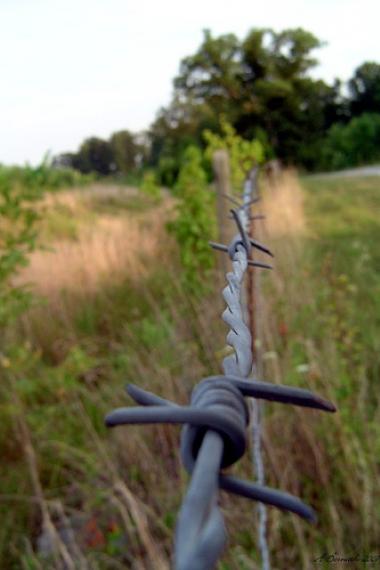In the middle of the 19th century, farmers on the American plains had a problem: If cows and other livestock from neighboring properties trampled their crops, it was the farmers themselves, not the owners of the roaming animals, who were responsible for the damage. The solution was fences, and farmers who lived near woodlands that could supply cheap timber built lots of them. In 1872, the value of America’s fencing stock was roughly equal to the value of all livestock in America, the national debt, or the railroads. Annual fencing repair costs were greater than the total tax revenue of all levels of government.
Out on the plains, where timber was scarce, wooden fences were prohibitively expensive. The few farmers who eked out a living there did so by planting mostly hay, which could withstand a bit of trampling. Then, in 1874, Joseph Glidden, a farmer in DeKalb, Illinois, came up with an idea that gave rise to America’s breadbasket: barbed wire.
Barbed wire solved the farmers’ problem: It kept out roaming livestock, was cheap to produce and easy to put up, and required little maintenance. In 1876, writes Harvard economist Richard Hornbeck, large-scale production of barbed wire began, and it was a nearly immediate hit, going from just 1,500 tons produced in 1876 to around 200,000 tons in 1900. During the intervening two decades, regions of the country with the least woodland saw the greatest increases in settlements, land improvements, land values, productivity, and crops such as corn, wheat, and oats. Hornbeck estimates that the increase in land values due to the availability of barbed wire was equal to nearly one percent of gross domestic product. By 1910, fencing stock on the prairie had increased more than 10-fold and wooden fences had all but disappeared.
Economists have long believed that reliable property rights are an essential ingredient of economic growth. In places where property rights are shaky, people hold back on investing in the productivity of their land and other assets, knowing they may not be able to reap the rewards. The story of barbed wire on the American plains shows that technological improvements, not just legal agreements, can help secure property and thus foster investment and prosperity.

